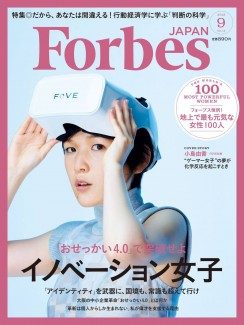FOVE today announced a Series A investment of $11 million led by the Colopl VR Fund with participation by Hon Hai VC fund 2020, and Samsung Ventures.
Fove, who is creating a VR headset with inbuilt eye-tracking, raised $480,000 on Kickstarter last year to manufacture a development kit of their headset. The company also announced during the campaign that they’d raised an undisclosed amount of capital from Samsung Ventures. Following the campaign Fove went on to participate in the River ‘frontier technology’ accelerator program.

Now the company says they’ve raised an $11 million Series A investment to continue R&D and “support [FOVE’s] goal of accelerating mass production of the device in the Fall of 2016.”
After our time with the headset at CES 2015 we called it the “next best” after the big three VR headsets (Rift, Vive, and PlayStation VR). The headset’s primary differentiator is built-in eye-tracking capabilities which opens the door to a number of potentially important VR uses. I explored a few possibilities of this technology in that prior article:
- Eye-based interface and contextual feedback: Imagine a developer wants to make a monster pop out of a closet, but only when the user is actually looking at it. Or perhaps an interface menu that expands around any object you’re looking at but collapses automatically when you look away.
- Simulated depth-of-field: While the current split-screen stereo view familiar to users of most consumer VR headsets accurately simulates vergence (movement of the eyes to converge the image of objects at varying depths) it cannot simulate depth of field (the blurring of out of focus objects) because the flat panel means that all light from the scene is coming from the same depth). If you know where the user is looking, you can simulate depth of field by applying a fake blur to the scene at appropriate depths.
- Foveated rendering: This is a rendering technique that’s aimed to reduce the rendering workload, hopefully making it easier for applications to achieve higher framerates which are much desired for an ideal VR experience. This works by rendering in high quality only at the very center of the user’s gaze (only a small region on the retina’s center, the fovea, picks up high detail) and rendering the surrounding areas at lower resolutions. If done right, foveated rendering can significantly reduce the computational workload while the scene will look nearly identical to the user. Microsoft Research has a great technical explanation of foveated rendering in which they were able to demonstrate 5-6x acceleration in rendering speed.
- Avatar eye-mapping: This is one I almost never hear discussed, but it excites me just as much as the others. It’s amazing how much body language can be conveyed with just headtracking alone, but the next step up in realism will come by mapping mouth and eye movements of the player onto their avatar.

While Fove had promised to integrate Valve’s ‘Lighthouse’ positional tracking technology into their development kit headset, an update on the company’s Kickstarter page last month announced the decision to drop Lighthouse in favor of their own optical positional tracking solution:
FOVE’s biggest mission has always been to make high-end eye-tracking technology widely available to VR enthusiasts and consumers as soon as possible. It was a difficult decision to make, but as we weighed our priorities we decided that our best contribution to VR is still our eye-tracking technology. This is where we have decided to prioritize our resources. Make no mistake, we do not intend to provide an inferior positional tracking system – the system being adopted will be sufficient to maintain an immersive experience, especially in conjunction with our awesome eye-tracking. We still believe that Lighthouse is one of the best positional tracking solutions out there, and while we cannot make any promises at this time, we do still hope to integrate Lighthouse into future models of FOVE. This difficult decision was made solely such that we can get our eye tracking into your hands as soon as possible. Considering production speed and the ever-changing market situation, we believe it to be the right decision.
Oculus similarly started as a crowdfunded Kickstarter project and went on to raise a $16 million Series A investment followed by a $75 million Series B prior to a $2 billion acquisition by Facebook in 2014.






